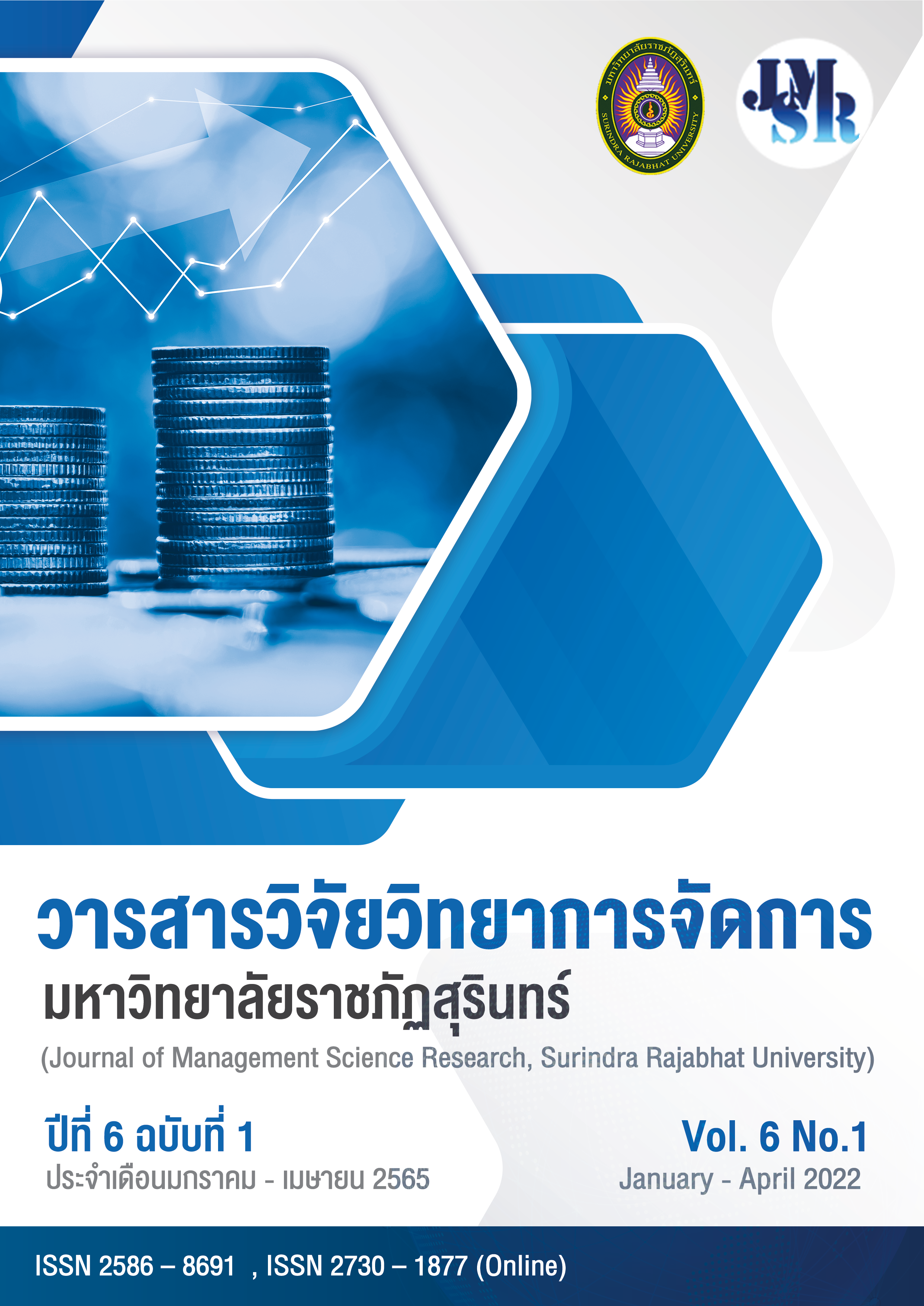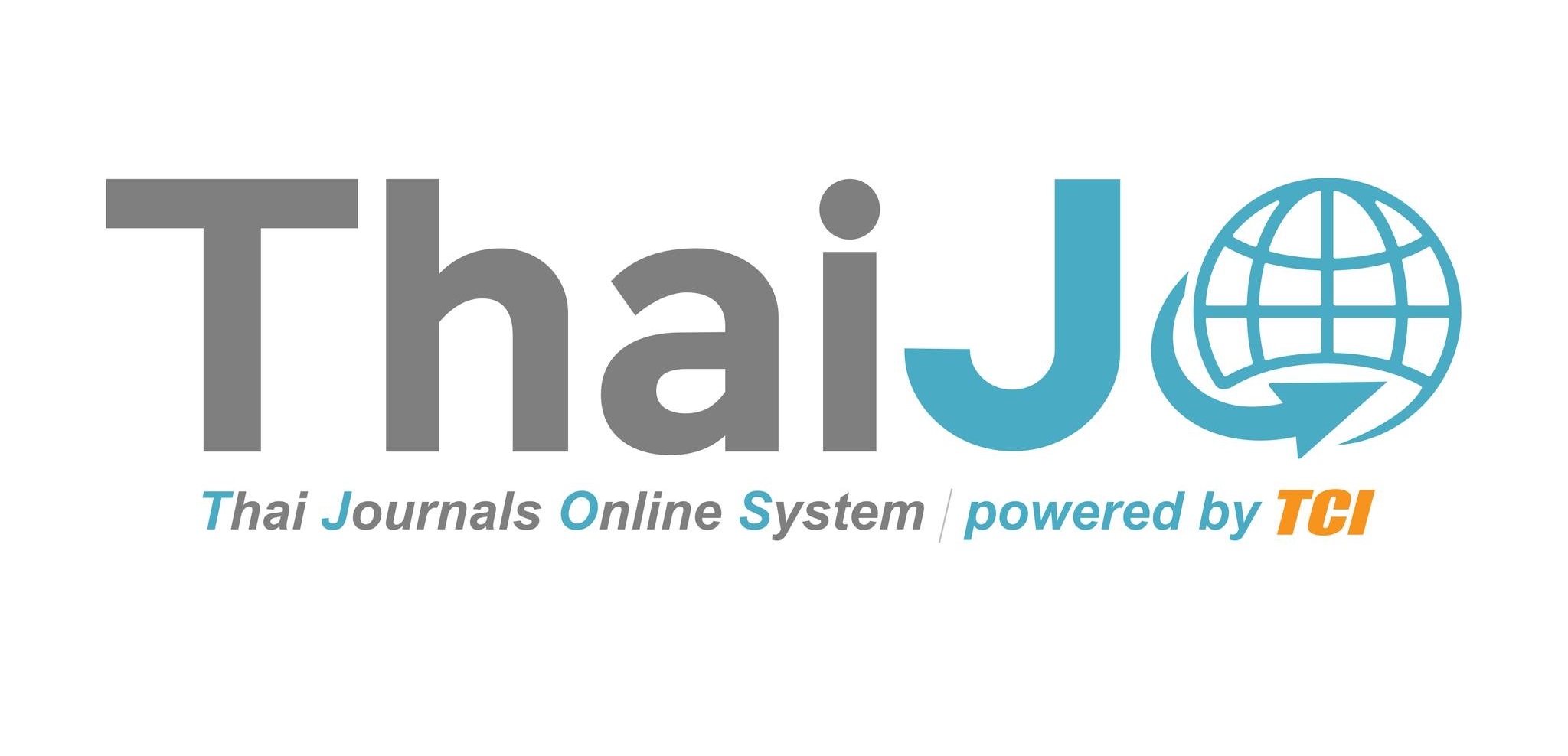Development of Yanang Leaf Juice Fortified Noodles Product
Keywords:
Noodle , Yanang Leaf JuiceAbstract
The objectives of this research were to study : 1) Basic noodle recipes for noodle product development. 2) Appropriateness of water content of Yanang leaves to partially substitute water in noodle products fortified with Yanang leaf juice. and 3) Acceptance of Yanang Leaf Noodles through the quality development process, with basic noodles recipe from research with randomness in complete blog. To assess the sensory quality in terms of color, smell, taste, texture (well set), and overall inclination to obtain an accepted test formula. The sample group are students of Sakon Nakhon Rajabhat University, academic year 2020 and Population in Muang District Sakon Nakhon Province. The research instrument was a questionnaire and a product of noodles fortified with Yanang leaves. Data analysis was percentage, mean, standard deviation. and use content analysis. The results of the research found that, accepted basic noodles recipes beautiful yellow Free from unpleasant odors, good taste, well-set noodles, the amount of water from Yanang leaves partially replaced plain water. in noodle products with water added to Yanang leaves The ratio of Yanang leaf juice to water is 50 : 50 percent is popular, and the acceptance of Yanang leaf noodles fortified food products through the quality development process It is accepted at the highest level of acceptance, the average score was 38.57 percent.
References
คณะเภสัชศาสตร์ มหาวิทยาลัยมหิดล. (2554) ใบย่านาง [ออนไลน์]. ค้นเมื่อ 15 พฤษภาคม 2563, จาก : http://phargarden.com/main.php?action=viewpage&pid=148.
ครูเอื้องฐปนีย์. (2562). อาหารหลัก 5 หมู่ [ออนไลน์]. ค้นเมื่อ 8 กันยายน 2563, จาก : https://sites.google.com/site/khruxeuxngthpniy/.
ณัฐชา ตะวันนาโชติ. (2563). Making-Sense [ออนไลน์]. ค้นเมื่อ 4 กันยายน 2562, จาก : https://hr.tcdc.or.th/en/Articles/making-Sense.
ทองสุข ภูตาเศษ. (2559). การศึกษาปัจจัยที่ใช้ในการเลือกซื้อวัตถุดิบของร้านอาหารโดยใช้วิธีกระบวนการวิเคราะห์เชิงลำดับขั้นกรณีศึกษา : ประเภท เนื้อสด อาหารทะเลสด. วิทยานิพนธ์วิทยาศาสตร์มหาบัณฑิต. มหาวิทยาลัยบูรพา.
ธนัชญา เกณฑ์ขุนทด. (2554). ผลของการใช้แป้งถั่วเขียวเพาะถั่วงอกทดแทนแป้งสาลีบางส่วนต่อคุณภาพของเส้นบะหมี่สด. รายงานการวิจัย. มหาวิทยาลัยรังสิต.
ธีรดา เที่ยงตรง, วัชระ ประเสริฐรุ่ง, ราชดำริ วงศ์ก่อ และอารยา เจริญสุข. (2551). การผลิตบะหมี่เสริมวิตามินจากฟักทองและแครอท. วิทยานิพนธ์วิทยาศาสตร์มหาบัณฑิต. มหาวิทยาลัยเทคโนโลยีราชมงคลกรุงเทพ.
บุญเรือง ขจรศิลป์. (2549). สถิติวิจัย (พิมพ์ครั้งที่ 9). นนทบุรี: โรงพิมพ์พีเอส. พริ้นท์. 162 หน้า.
สำนักงานสถิติจังหวัดสกลนคร. (2553). สถิติประชากรศาสตร์ [ออนไลน์]. ค้นเมื่อ 23 มิถุนายน 2562, จาก : http://service.nso.go.th/nso/nsopublish/districtList/S010107/th/63.htm
อโนทัย เพ็ชรสุวรรณ. (2549). การออกแบบบรรจุภัณฑ์สำหรับข้าวแต้น ในโครงการหนึ่งตำบลหนึ่งผลิตภัณฑ์. ปริญญานิพนธ์การศึกษามหาบัณฑิต. มหาวิทยาลัยศรีนครินทรวิโรฒ .
อมราภรณ์ วงษ์ฟัก. (2546). ก๋วยเตี๋ยว. กรุงเทพมหานคร: บริษัท ศรีสยามการพิมพ์ จำกัด. 82 หน้า.
อัจฉรา เทียมภักดี, วนิดา กัณฑรักษ์ และฤทธิโชค มาลา. (2548). การผลิตบะหมี่เสริมโปรตีนจากแป้งถั่วเหลือง. กรุงเทพฯ : คณะเทคโนโลยีคหกรรมศาสตร์ มหาวิทยาลัยเทคโนโลยีราชมงคลกรุงเทพ.
Yamane, T. 1967. Statistics, An Introductory Analysis, 2nded., New York: Harper and Row.






